Abstract
Two retarded children were taught to name pictures according to a standardized procedure. In Exp. I, correct responses were positively reinforced on a five to one ratio under one stimulus condition, incorrect responses were followed with a sharp “no”, and the subject was ignored for inattentive behavior. Under another stimulus condition, correct responses were reinforced as in the first condition, but incorrect responses and 5-sec periods of inattentive behavior were followed by “no” and an electric shock. Less inattentive behavior was exhibited and more words were learned to a pre-set criterion in the shock condition than in the no-shock condition. In Exp. II, the ratio of inappropriate responses to shock was varied. The amount of inattentive behavior tended to increase in the shock condition, relative to that in the no-shock condition, as this ratio was increased. Two other measures of performance used in the present experiments were the ratio of errors to correct responses and the number of correct responses. Shock tended to produce better performance on these measures also.
Full text
PDF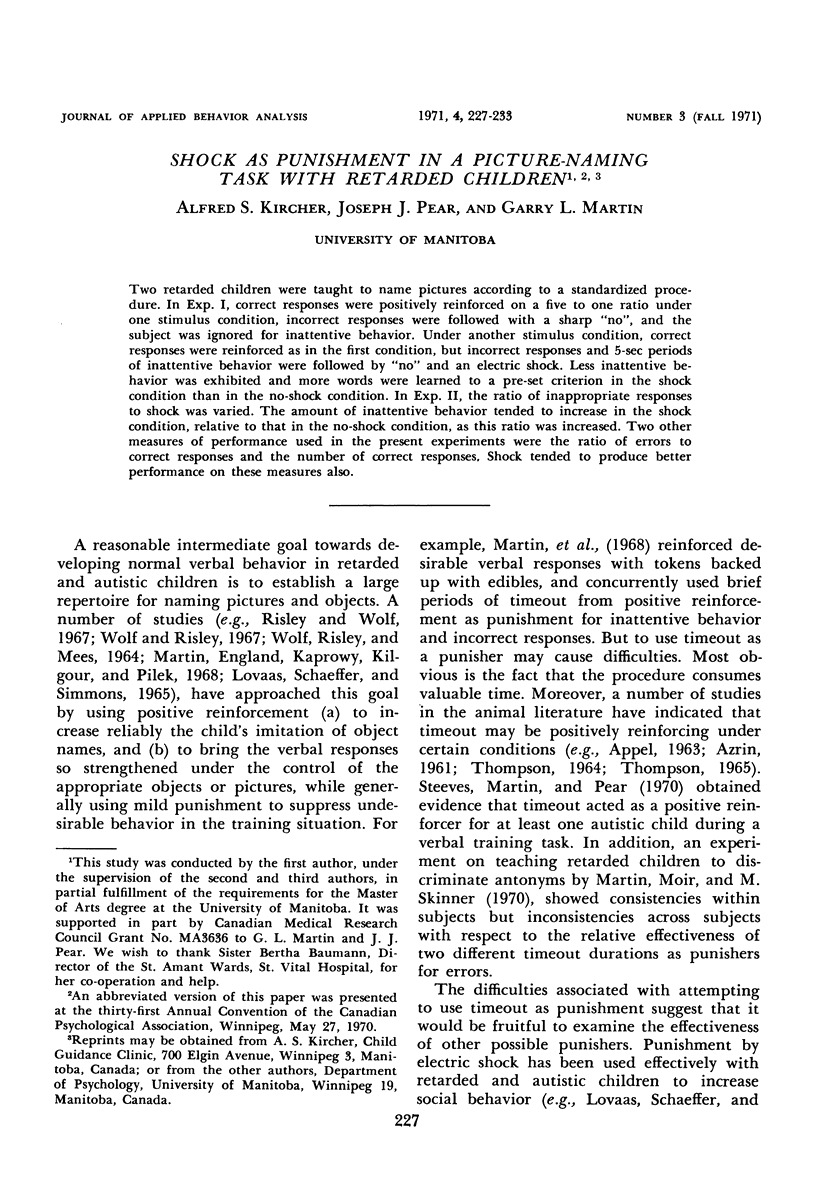
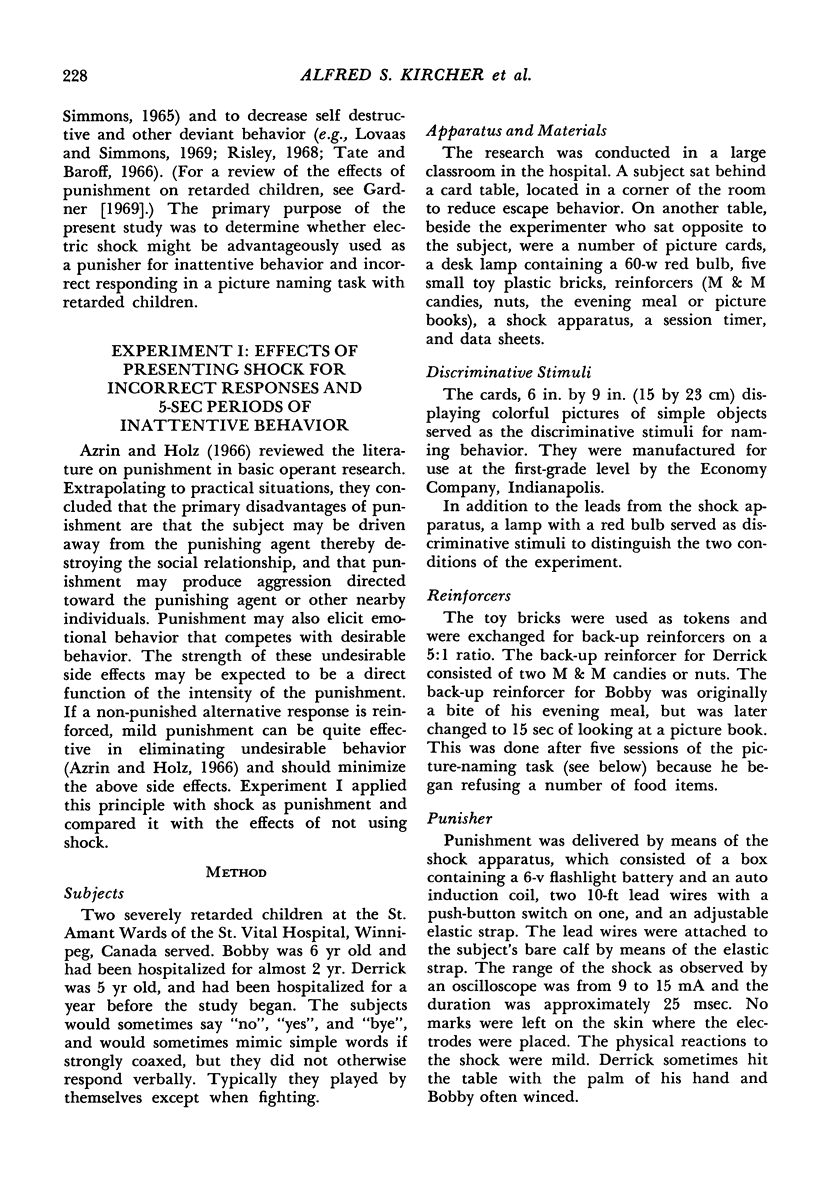
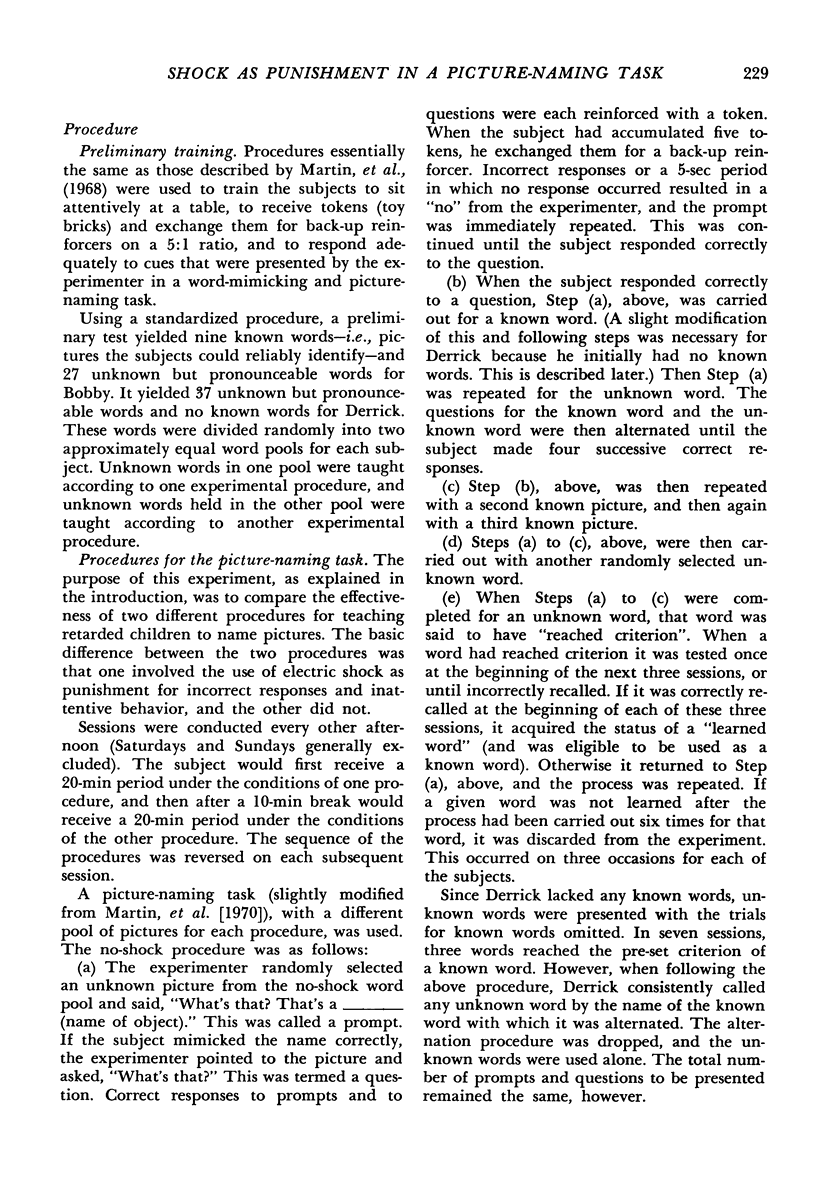
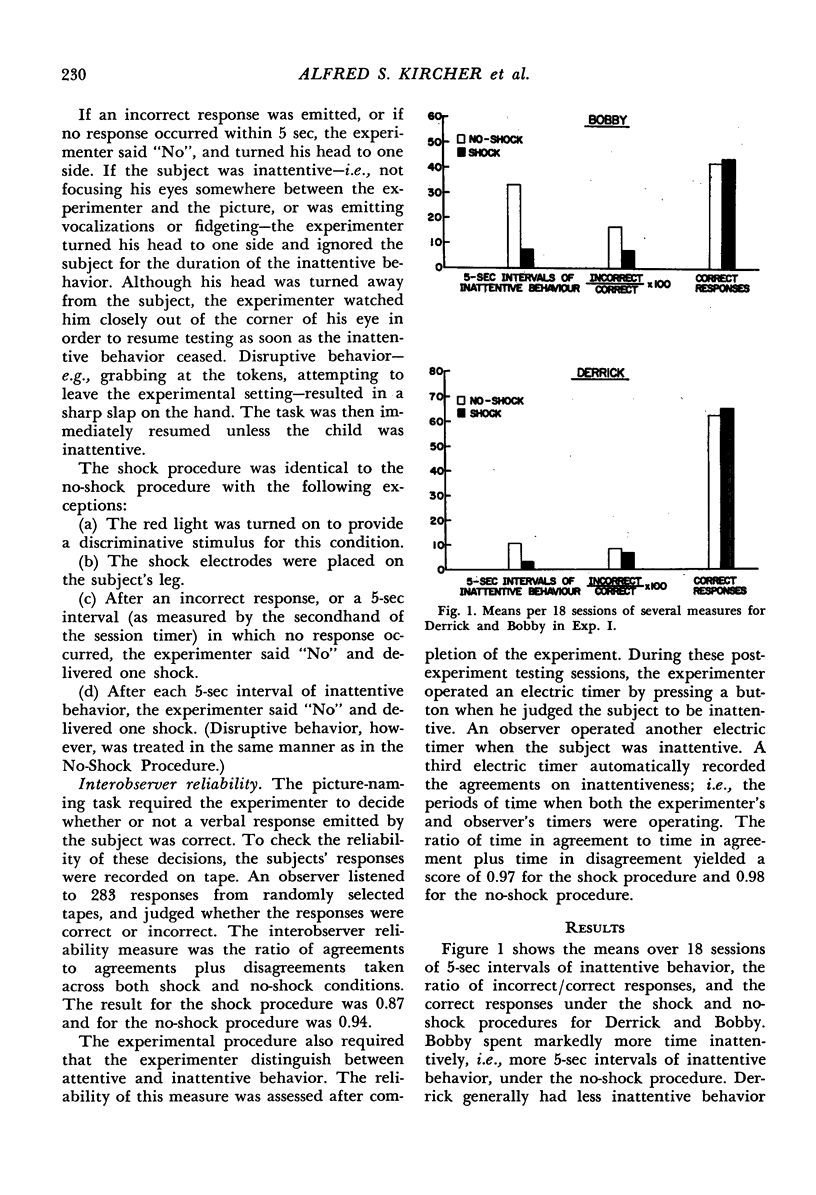

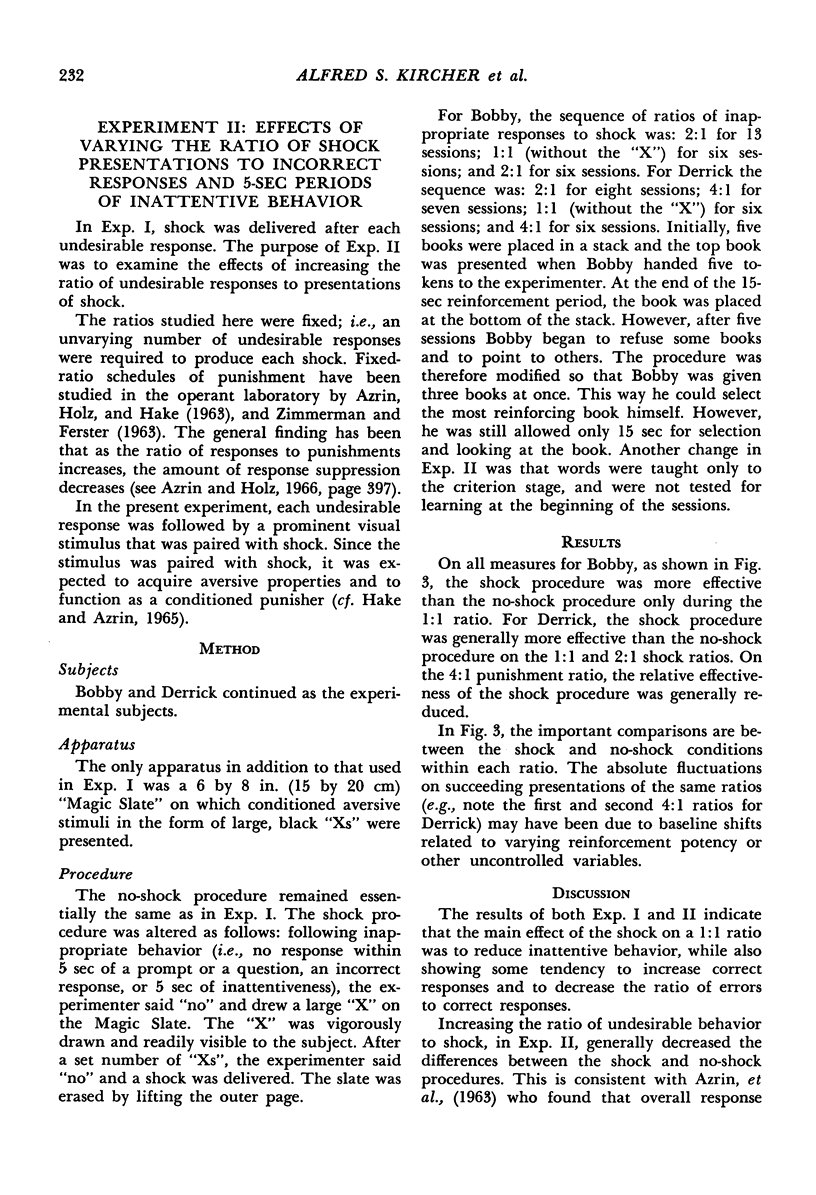

Selected References
These references are in PubMed. This may not be the complete list of references from this article.
- APPEL J. B. Aversive aspects of a schedule of positive reinforcement. J Exp Anal Behav. 1963 Jul;6:423–428. doi: 10.1901/jeab.1963.6-423. [DOI] [PMC free article] [PubMed] [Google Scholar]
- AZRIN N. H., HOLZ W. C., HAKE D. F. Fixed-ratio punishment. J Exp Anal Behav. 1963 Apr;6:141–148. doi: 10.1901/jeab.1963.6-141. [DOI] [PMC free article] [PubMed] [Google Scholar]
- AZRIN N. H. Time-out from positive reinforcement. Science. 1961 Feb 10;133(3450):382–383. doi: 10.1126/science.133.3450.382. [DOI] [PubMed] [Google Scholar]
- Gardner W. I. Use of punishment procedures with the severely retarded: a review. Am J Ment Defic. 1969 Jul;74(1):86–103. [PubMed] [Google Scholar]
- HAKE D. F., AZRIN N. H. CONDITIONED PUNISHMENT. J Exp Anal Behav. 1965 Sep;8:279–293. doi: 10.1901/jeab.1965.8-279. [DOI] [PMC free article] [PubMed] [Google Scholar]
- Lovaas O. I., Simmons J. Q. Manipulation of self-destruction in three retarded children. J Appl Behav Anal. 1969 Fall;2(3):143–157. doi: 10.1901/jaba.1969.2-143. [DOI] [PMC free article] [PubMed] [Google Scholar]
- Martin G. L., England G., Kaprowy E., Kilgour K., Pilek V. Operant conditioning of kindergarten-class behavior in autistic children. Behav Res Ther. 1968 Aug;6(3):281–294. doi: 10.1016/0005-7967(68)90062-4. [DOI] [PubMed] [Google Scholar]
- Risley T. R. The effects and side effects of punishing the autistic behaviors of a deviant child. J Appl Behav Anal. 1968 Spring;1(1):21–34. doi: 10.1901/jaba.1968.1-21. [DOI] [PMC free article] [PubMed] [Google Scholar]
- Risley T., Wolf M. Establishing functional speech in echolalic children. Behav Res Ther. 1967 May;5(2):73–88. doi: 10.1016/0005-7967(67)90001-0. [DOI] [PubMed] [Google Scholar]
- THOMPSON D. M. ESCAPE FROM SD ASSOCIATED WITH FIXED-RATIO REINFORCEMENT. J Exp Anal Behav. 1964 Jan;7:1–8. doi: 10.1901/jeab.1964.7-1. [DOI] [PMC free article] [PubMed] [Google Scholar]
- Tate B. G., Baroff G. S. Aversive control of self-injurious behavior in a psychotic boy. Behav Res Ther. 1966 Nov;4(4):281–287. doi: 10.1016/0005-7967(66)90024-6. [DOI] [PubMed] [Google Scholar]
- Wolf M., Risley T., Johnston M., Harris F., Allen E. Application of operant conditioning procedures to the behavior problems of an autistic child: a follow-up and extension. Behav Res Ther. 1967 May;5(2):103–111. doi: 10.1016/0005-7967(67)90004-6. [DOI] [PubMed] [Google Scholar]
- ZIMMERMAN J., FERSTER C. B. Intermittent punishment of Sdelta responding in matching to sample. J Exp Anal Behav. 1963 Jul;6:349–356. doi: 10.1901/jeab.1963.6-349. [DOI] [PMC free article] [PubMed] [Google Scholar]


